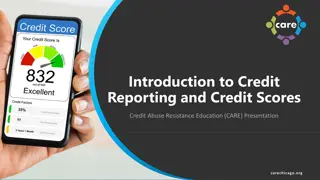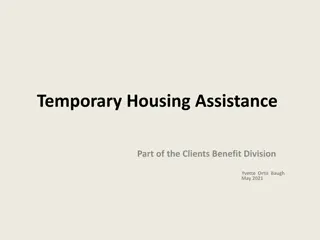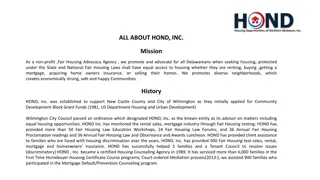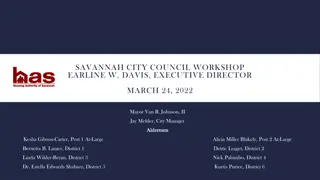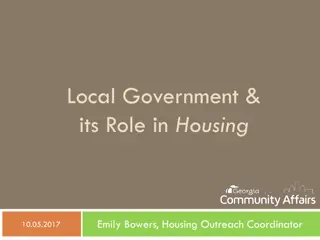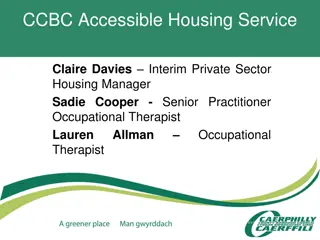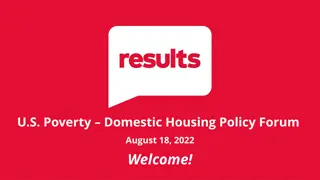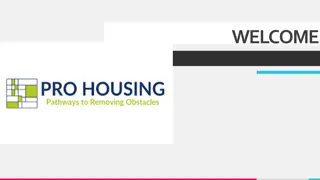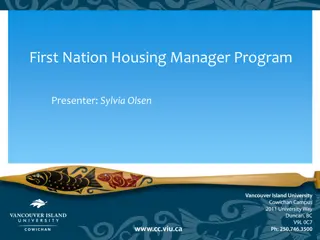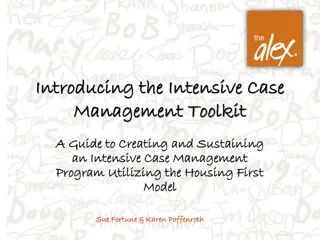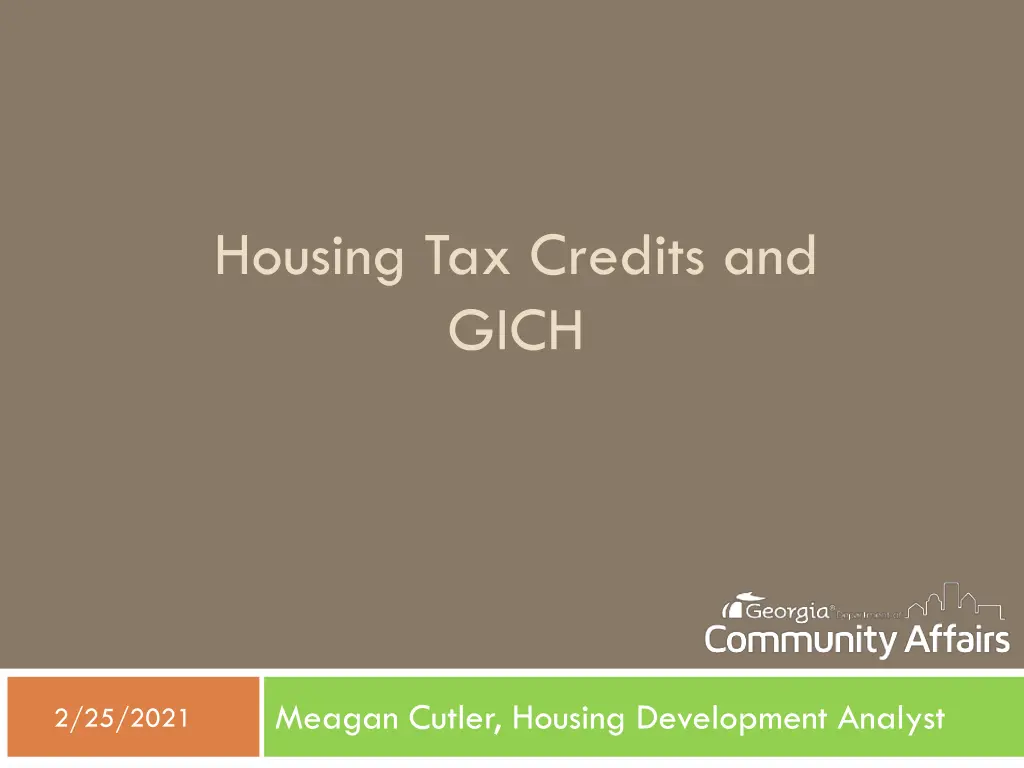
Understanding Housing Tax Credits and the Georgia Incentive Code for Housing (GICH)
Explore the benefits of the Housing Tax Credit (LIHTC), its impacts on communities, and the advantages of the Georgia Incentive Code for Housing (GICH). Discover how these initiatives address housing needs for seniors, working families, and individuals with disabilities through case studies and economic impacts.
Download Presentation

Please find below an Image/Link to download the presentation.
The content on the website is provided AS IS for your information and personal use only. It may not be sold, licensed, or shared on other websites without obtaining consent from the author. If you encounter any issues during the download, it is possible that the publisher has removed the file from their server.
You are allowed to download the files provided on this website for personal or commercial use, subject to the condition that they are used lawfully. All files are the property of their respective owners.
The content on the website is provided AS IS for your information and personal use only. It may not be sold, licensed, or shared on other websites without obtaining consent from the author.
E N D
Presentation Transcript
Housing Tax Credits and GICH Meagan Cutler, Housing Development Analyst 2/25/2021
Overview What is the Housing Tax Credit (LIHTC)? Why would we want it in our community? How does it work? GICH advantages in the QAP What about this GICH letter? Case Studies
What is the Housing Tax Credit? Enacted by Tax Reform Act of 1986 under Pres. Reagan Largest producer of affordable housing in the country (Commons at Imperial Hotel, Atlanta, GA)
Housing Credit Impact Addresses critical need for safe, decent housing for: Seniors seeking independent living Georgia working families with low and moderate incomes Individuals with disabilities Residents at Lone Mountain Village, Ringgold GA
Housing Credit Impact (cont.) First-year Economic Impact for every 1,000 tax credit units built: 1,130 jobs created $107 million generated in local income $42 million generated in tax revenue Construction jobs created at Waterford Estates, Dublin, GA
What About Property Values? Several studies have shown that affordable housing generally has no adverse effects and may even have positive impacts Design, Management, Location, and Dispersion Traffic? Studies show that affordable housing residents own fewer cars and drive less than residents of market-rate homes
How Competitive LIHTC Works: IRS allocates ~$2.81/resident to each state Georgia in 2020: $31,478,997 Developers compete to win award of 9% credits State Housing Finance Agency sets requirements and incentives via the Qualified Allocation Plan (QAP) Private investors contribute equity and receive benefits of the tax credits Housing is built and rents must be affordable (typically 60% AMI) for at least 30 years Once housing is inhabited, then tax benefits begin
DCA 9% Housing Tax Credit Properties Since 2000 751 9% allocated and in-service properties
Snapshot: 2020 9% Funding Round 93 applications submitted 39 properties funded 2,699 units financed Around 49% in rural areas 13% went to preservation 31% senior properties
DCA Community Initiatives Competitive advantage for GICH Community support for an Application within its jurisdiction One letter for only one Application per GICH Community Additional Local Government letter in support of decision is required
Community Transformation Competitive advantage for Community-Based Developers assembling Community Quarterback Boards (CQB) and together committing to create a Community Transformation Plan targeting a defined neighborhood which includes site Additional advantage for community being a GICH participant or certified alumni and appointing GICH Team member to CQB
Other Ways Local Governments Can Boost Application Competitiveness
Revitalization/Redevelopment Plans Competitive advantage for site being within the targeted area of a Community Revitalization Plan Additional advantages for: Local government solicitation of public input and engagement during CRP creation Local government demonstrates financial commitment to advancing CRP in form of funds raised or allocated, tax incentives, or fee waivers
Revitalization/Redevelopment Third-Party Capital Investment Competitive advantage for unrelated third party s investment of resources that has resulted, or will result, in the development of a place-based improvement within .5-mile radius of site Community assets Infrastructure improvements
Community Designations HUD Choice Neighborhood Implementation (CNI) Grant Competitive advantage for sites located in areas that have received HUD CNI Grant Grant awardee must select only one application to receive points Development must be identified in CNI Grant application
Community Designations Purpose Built Communities Competitive advantage for applications designated by Purpose Built Communities as furthering one Community s transformation
Favorable Financing Qualifying Sources of Favorable Financing Competitive advantage for securing federal, state, or local funds or loans or foundation grants or loans Long-Term Ground Lease Competitive advantage for receiving long-term ground lease from PHA or government entity for nominal consideration and no other land costs
Historic Preservation If historic preservation is priority for local government, consider adaptive reuse through LIHTC When thinking about where to do affordable housing in your locality, also keep in mind historic structures for adaptive reuse
Location-Based Proximity to desirable amenities Proximity/access to public transit Access to schools with above-average standardized test scores or Beating the Odds designation Low-poverty communities Local health and economic indicators Lack of 9% LIHTC awards in area in recent years
Other Criteria Deeper income targeting Mixed income developments Phased developments Extended affordability Exceptional nonprofit or PHA Compliance performance
Important Dates & Info 2021 9% Application 2022 Qualified Allocation Plan
Key Dates GICH certification due March 31, 2021, 5 pm 2021 Applications due May 21, 2021, 4 pm 2022 and future QAPs will be developed year- round
2022 QAP Development QAP policy is an annual, iterative process Draft will be available in early October with a 30-day comment period What to expect: Listening Sessions Public Hearings Substantive Changes document Redlined version of QAP QAP Workshop Ongoing Q&A Submit QAP input throughout year
GICH Letter Requirements Specifics and Common Mistakes
Team Contact and Leader Update Form GICH community must be a current participant or a certified alumni re-certify every 2 years Ensure successful certification by checking list posted by UGA in April Submit certification letter with LIHTC application GICH letter must be signed by the Primary or Secondary Contact on file with the UGA Housing and Demographic Research Center These roles can be officially re-designated
Steps to Success with LIHTC Case Study Griffin, GA
Griffins Steps to Success Partnerships Public Housing Authority City Land Bank Housing Council Housing plan Developer relationships Alternate funding sources Communication
Steps to Success with LIHTC Case Study Rome, GA
Romes Steps to Success Partnerships City South Rome Redevelopment Agency South Rome Redevelopment Corporation Purpose Built Communities Public Housing Authority Land ownership Developer relationships Additional Funding
Steps to Success with LIHTC Case Study Thomasville, GA
Thomasvilles Steps to Success GICH letter scoring criteria Housing choice and diversity Mixed use Civic space Connectivity to existing neighborhoods Location Streetscape Architectural aesthetics Economic and sociologic impact Zoning overlay and design guidelines
Wrap Up To receive information on trainings, workshops, and general program updates, sign up on our email list at: https://www.dca.ga.gov/safe-affordable- housing/rental-housing-development/housing-tax- credit-program-lihtc Contact us at hfdround@dca.ga.gov
Additional Resources From the Housing Tax Credit homepage, select QAPs and Related Documents, then the applicable year to: Submit a Question Submit Written Input Join Policy Advisory Email List Link to list of LIHTC developments (including developer name): https://www.dca.ga.gov/node/3814






